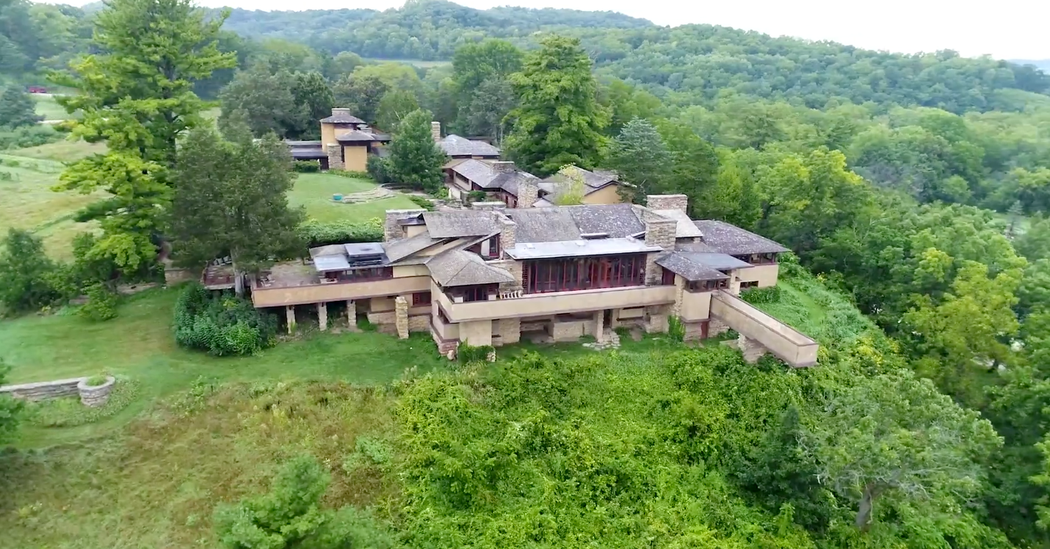“Fallingwater was designed at this desk,” said Ms. Hamblen, referring to Wright’s residential masterpiece in Pennsylvania, as she laid a palm on a massive wood tabletop.
A few hours before, the program began on a practical level when our class of nine met at the Frank Lloyd Wright Visitor Center — a building in Wright’s signature Prairie style, characterized by strong horizontal lines and organic materials such as stone and wood — where picture windows frame views of the Wisconsin River. There, a framed essay by Wright entitled “Why I Love Wisconsin” extolled the people, the barns and the hilly landscape “that picks you up in its arms and, so gently, almost lovingly, cradles you.”
“I love her,” he wrote, referring to Wisconsin, “because she has not so many snobs.”
Presumably among the unsnobby, his grandparents Richard and Mallie Lloyd Jones purchased land in 1863 along the Wisconsin River in the Driftless Area, where unglaciated rolling hills eluded the Ice Age debris that leveled much of the Midwest.
Wright was born in nearby Richland Center in 1867, and though he later made his name in Chicago, establishing the Prairie style of architecture, he came back to the family property often.
By 1911, when he finished Taliesin, Wisconsin represented a refuge from the scandal of leaving his wife and children for Mamah Borthwick Cheney, the wife of a client. (Her life ended violently when a servant killed her and six others and set fire to Taliesin in 1914; it was rebuilt then and again after a subsequent 1925 fire.)
Today, most of its more than 25,000 annual visitors take one-to-four-hour tours of the estate, where seven Wright-designed buildings share 800 acres of farmland and oak savannas. But on this prime fall weekend, when license plates from Saskatchewan to New York filled the parking lot, I and four couples from Wisconsin and Illinois arrived with duffel bags and varying experience in bread baking, primarily drawn to the opportunity to spend a weekend at Taliesin.
The group split residencies on the property between Tan-y-Deri, the 1908 house Wright built for his sister Jane Porter, and his 1949 Midway Barn, remodeled indoors with basic accommodations. My second-floor bedroom with a shared bath at Tan-y-Deri, furnished with an Arts-and-Crafts-style wooden bed and dresser, took in the estate’s fields of drying corn and shorn rye from diamond-paned leaded glass windows.
Click Here to Read the Full Original Article at NYT > Travel…
